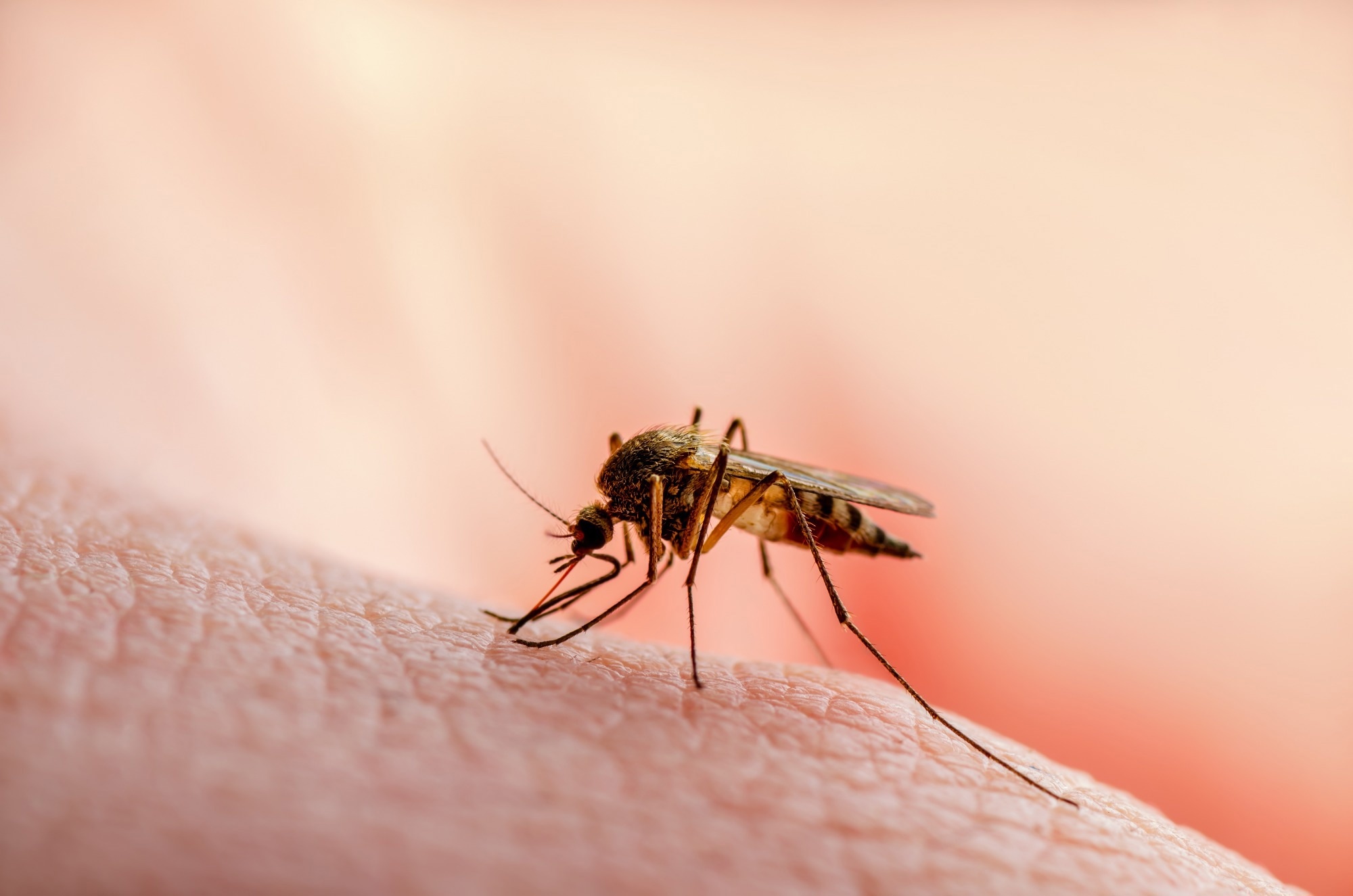In a recent opinion article published in PNAS, researchers reviewed existing data on Anopheles stephensi population establishment patterns in Africa and Asia and proposed that the wind may facilitate mosquito transmission over long distances.
 Study: Urban malaria may be spreading via the wind—here’s why that’s important. Image Credit: nechaevkon/Shutterstock.com
Study: Urban malaria may be spreading via the wind—here’s why that’s important. Image Credit: nechaevkon/Shutterstock.com
Background
Malaria, a vector-borne illness, is a leading cause of death in Africa. The disease landscape of Africa seems to be changing with the transmission of An. stephensi in urban regions.
Existing infection control and vector surveillance systems are not sufficiently equipped to effectively curtail An. stephensi transmission, jeopardizing intercontinental malaria eradication.
About the opinion
In the present opinion, researchers presented data on the wind-borne transmission of Anopheles stephensi to urban regions of Africa and Asia.
Dispersal strategy and geographical spread of An. stephensi
Akin to the urban yellow fever-causing Aedes aegypti, the larvae of An. stephensi grow in containers, abandoned tires, and cisterns proximal to human residences.
The human population of Africa has rapidly expanded to cities such as Lagos, Kinshasa, Abidjan, and Khartoum and has become increasingly vulnerable to An. Stephensi infection. According to the current consensus, it is believed that the spread of An. stephensi to the northern region of Africa was facilitated by human transport by ships and/or airplanes.
An. stephensi eggs are particularly vulnerable to dehydration and lose their viability within two days of being exposed to low humidity, limiting the opportunistic and bulk transport of eggs required for effective implantation or propagule pressure.
Nevertheless, juvenile An. stephensi can also survive in stagnant freshwater and transmit to different ports via marine transit.
For more than three decades, An. stephensi progressively moved across Asia and spread to Goa, followed by transmission to the southern regions of India, the Lakshadweep Islands, and Sri Lanka during the 1970s, 1980s, 2001, and 2017, respectively.
The mosquito invaded the Red Sea and the northernmost part of Africa after four years of spreading to the southwest regions of Arabia. An. stephensi was discovered in Africa in Djibouti, Sudan and Ethiopia, and Nigeria in 2012, 2016, and 2020, respectively.
The mosquito's swift entry into the central regions of Africa from coastal areas contrasts with Aedes albopictus's three-decade journey inland. An. stephensi spread to a single continent in four decades, whereas Aedes albopictus invaded five continents.
The spatiotemporal pattern of Anopheles stephensi range expansion into Asian, Arabian, and African regions is contrasting with the massive transmission of Aedes albopictus by the marine route.
Genetic variables and busy highways for An. stephensi transmission
The mitochondrial cytochrome oxidase subunit one (COI) and cytochrome B (CytB) gene analyses of sequenced An. stephensi mosquito populations in Ethiopia reported significant variations, implying massive colonizing events or numerous invasions of the mosquito in Africa in a short period.
By 2008, An. stephensi had emerged in the southwestern parts of the Arabian Peninsula, 30.0 km to 250.0 kilometers from the coast of Africa, likely due to multiple invasions.
Studies have reported a high level of genetic similarity between the mosquito species prevalent in Ethiopia, Sudan, and Djibouti. In addition, survey-based studies of novel invasive mosquito populations in North Kenya reported that the population most closely resembled their counterparts in India, Nigeria, and Yemen.
Implying transmission of An. stephensi from the southwestern Arabian Peninsula regions by the wind. Up to half of Mali's mosquitoes, including the malaria-causing Anopheles species, transmit at high altitudes by the wind, especially from southeast Asia.
Mosquitoes, once established in the western and southern portions of the Peninsula, may reach the Red Sea in seven hours, assuming wind speeds of 10.0 meters per second.
According to flight mill research, such durations have been commonly observed for various insects other than Anopheles stephensi. There is no scientific evidence on the dispersion of An. stephensi by human vehicular transport.
Novel studies have reported that An. Stephensi spreads on land instead of along the shores of major ports. The discovery supports long-distance transmission of Anopheles stephensi by the easterly winds, notably between September and November, the period during which winds blow to the northern regions of East Africa from the southern regions of the Peninsula.
Transformations from nomadic to settled lifestyles in Arabia with oil discovery in the year 1938, with considerable elevation in human population density and the extent of urbanization along the Peninsula (population density increased >10-fold between 1940 and 2010, compared to three-fold globally), were the primary drivers.
A rise in human settlement density, presumably accompanied by larval proliferation and an increase in resting sites and appropriate hosts, facilitated Anopheles stephensi’s establishment and survival, which would otherwise perish.
Conclusions
Based on the findings, considering plane and ship engagement, the risk of An. stephensi invasion into other continents (e.g., South America) is high. Wind trajectory analysis could help identify source populations and newly invaded places, which can then be confirmed by ground-level surveillance.
Furthermore, a population genetics study could aid in distinguishing between source groups linked by the wind instead of human movement.
Understanding the modalities of An. stephensi transmission, in particular, could improve risk assessment.
Approaches used to detect the source population of agricultural migrants (e.g., locusts, moths, and planthoppers) and predict areas requiring extensive mosquito control programs may assist mitigation methods.